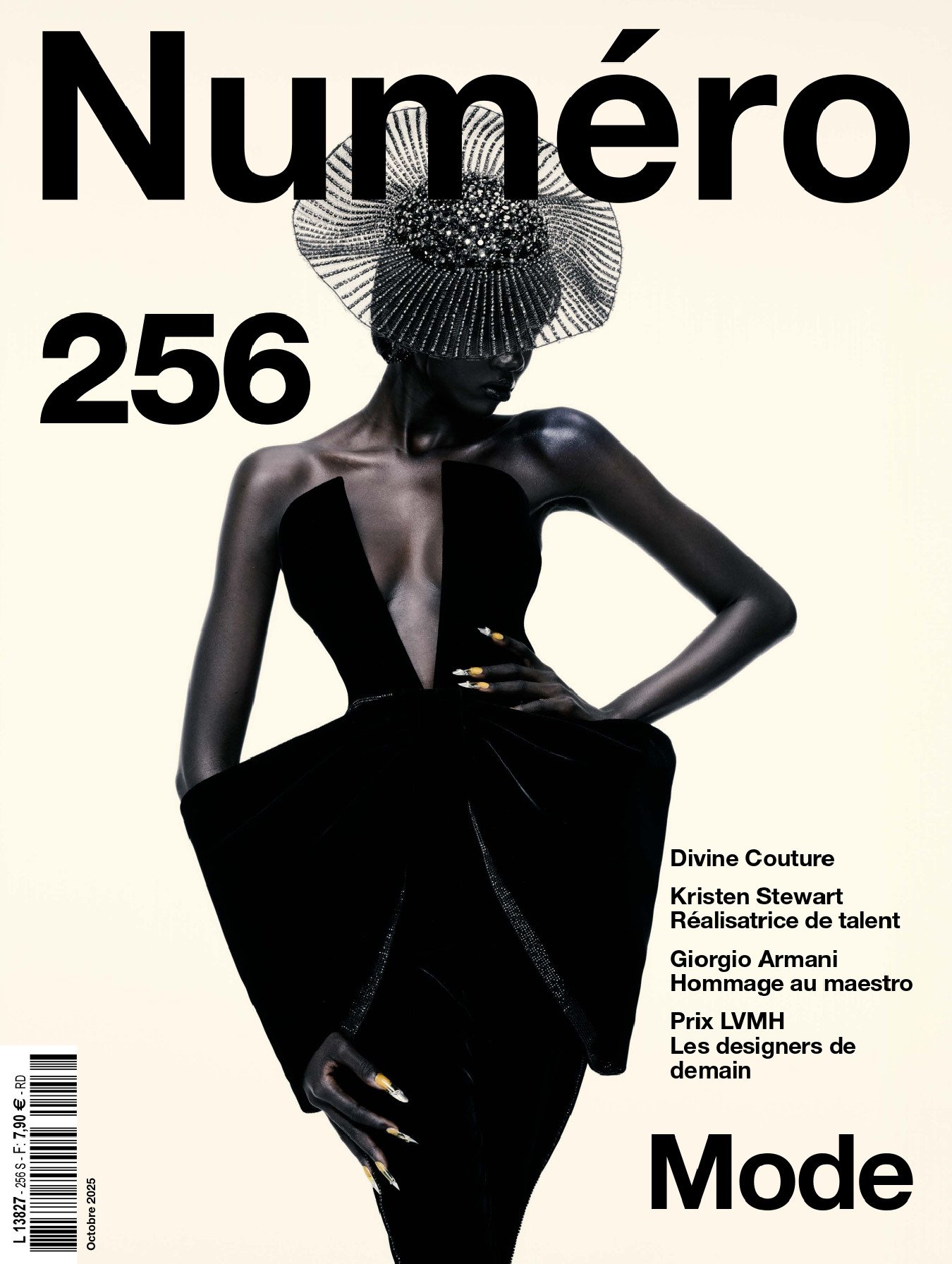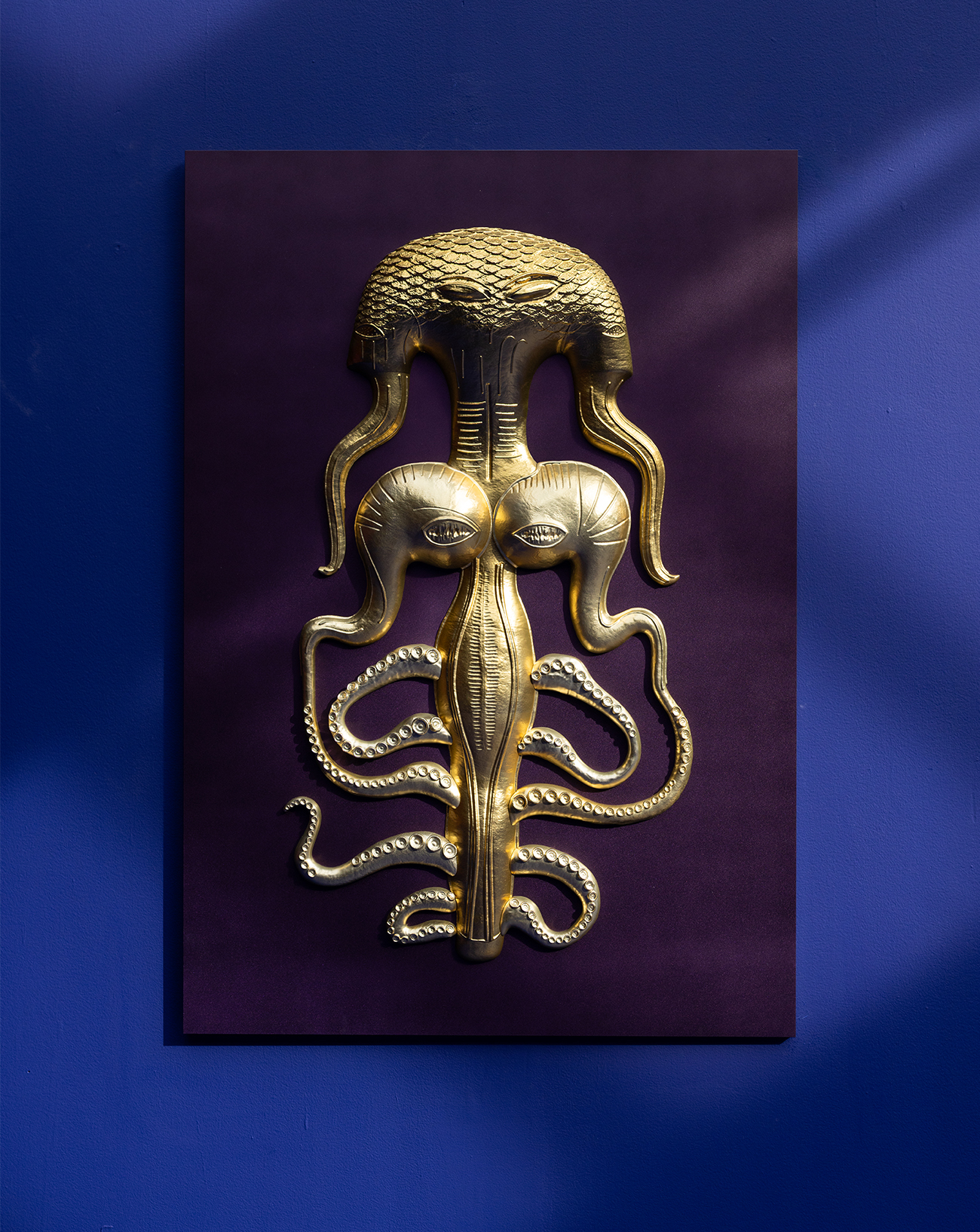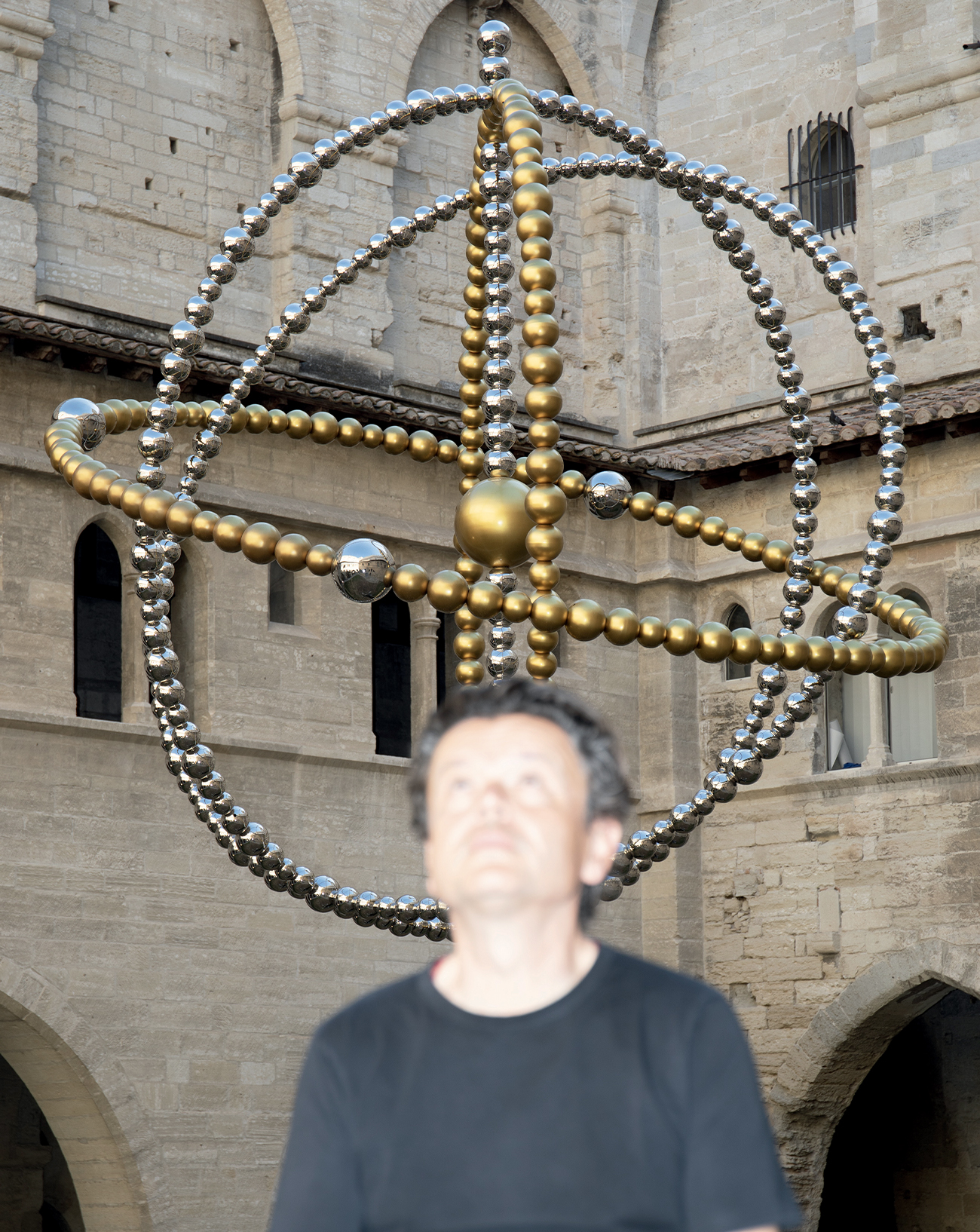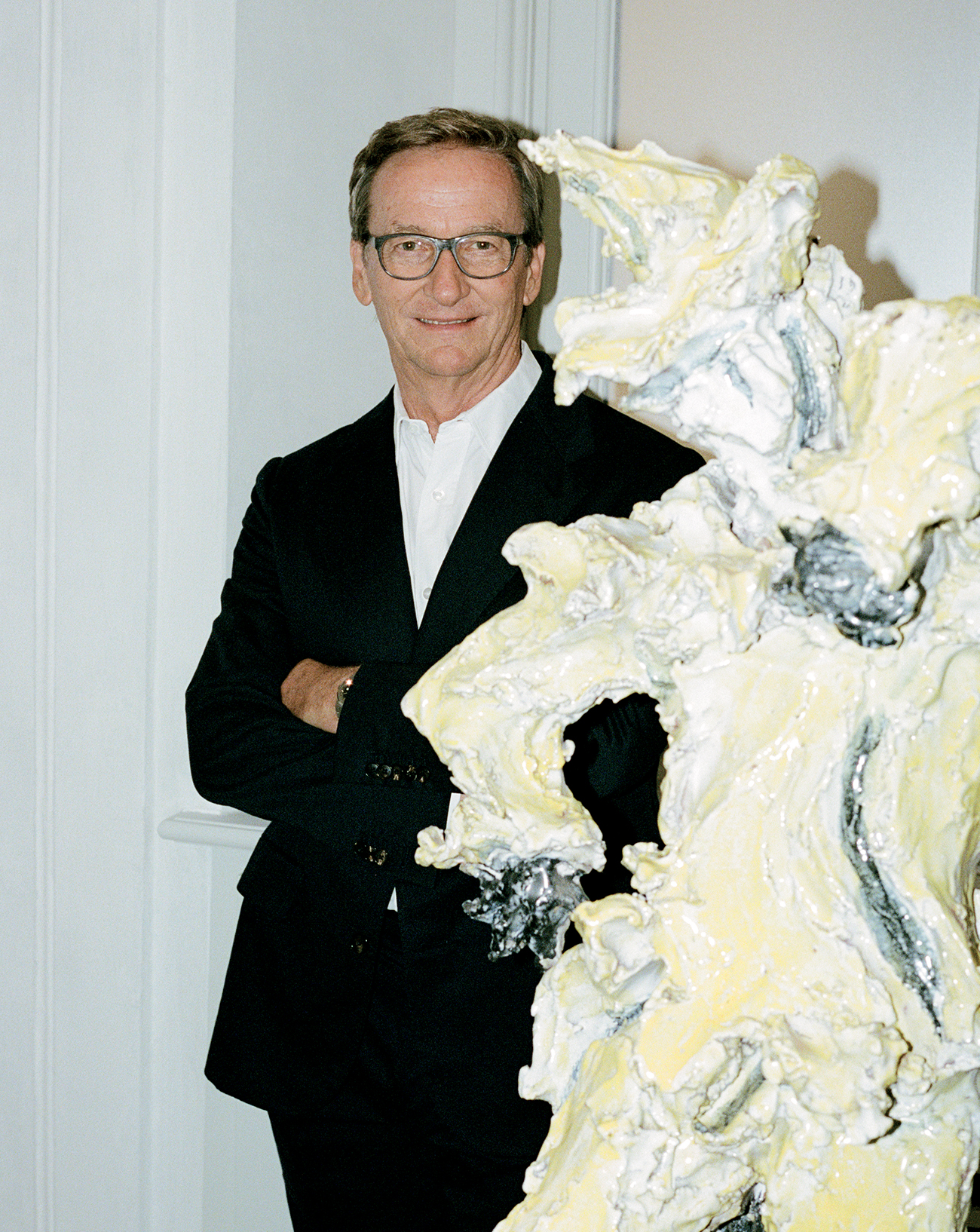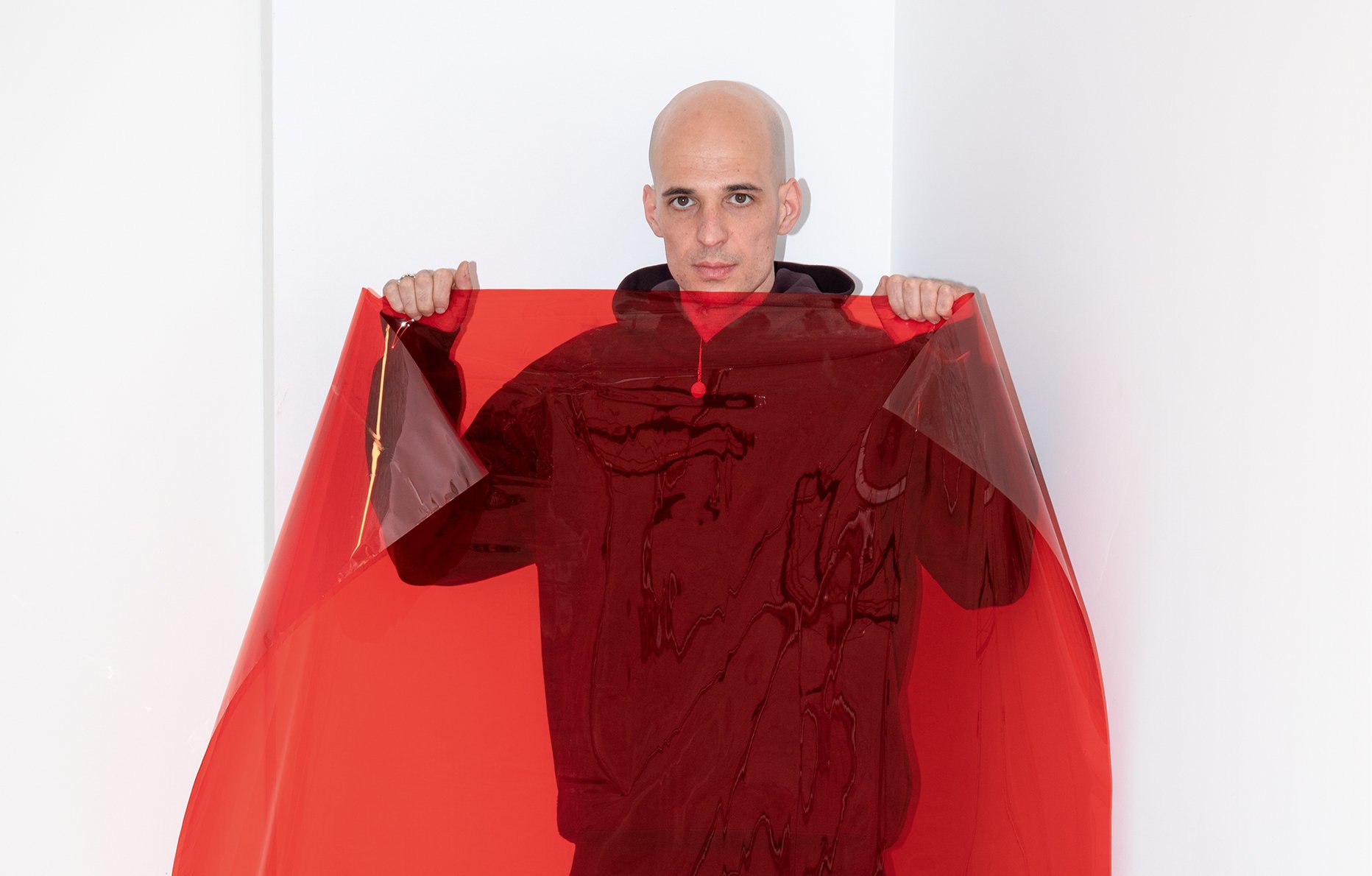
29
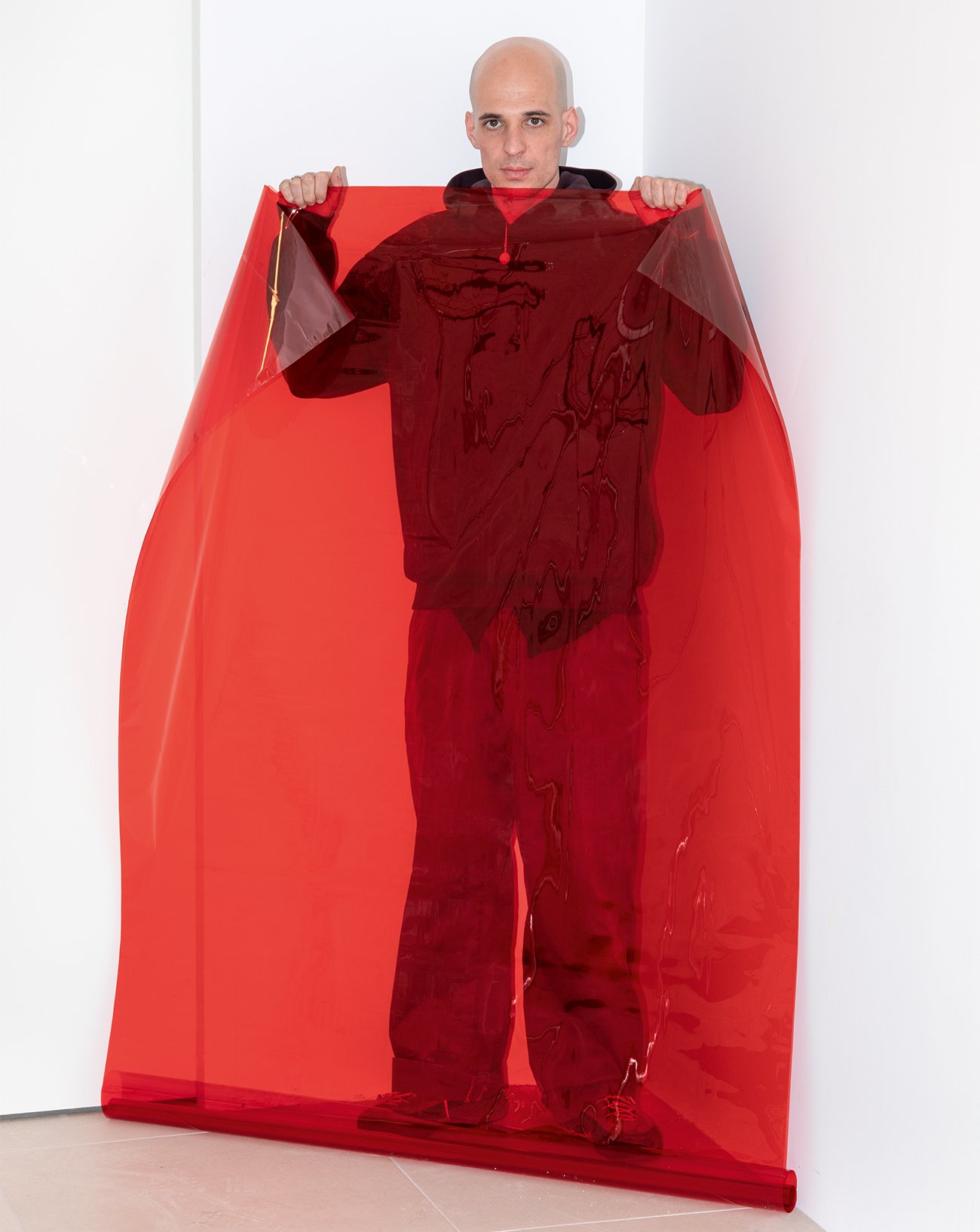
29
Jean-Vincent Simonet, the photographer who paints his images at the Reiffers Art Initiatives
Just like a painter, photographer Jean-Vincent Simonet reworks his images directly with his fingers, making the ink bleed across the surface of still-wet photo paper. His captivating works are on display until May 10th as part of the exhibition “1000 milliards d’images” by the Reiffers Art Initiatives Prize, in Paris.
Portrait by Jonathan Llense,
Interview by Thibaut Wychowanok.
Published on 29 April 2025. Updated on 30 July 2025.
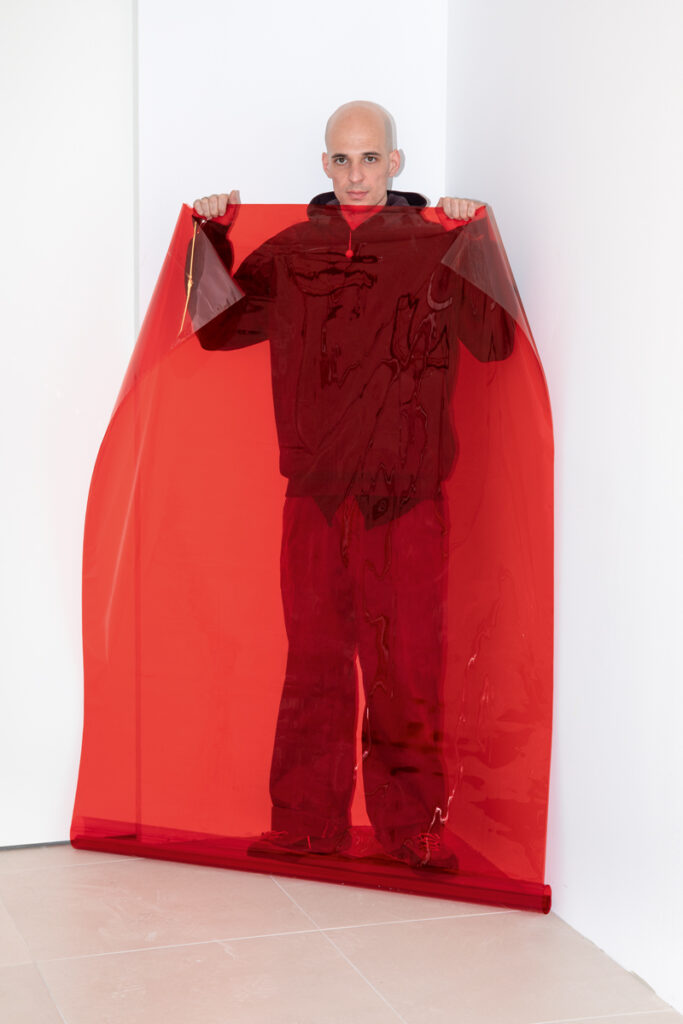
Interview with artist Jean-Vincent Simonet, exhibited at the Reiffers Art Initiatives
Numéro art: How did you develop the images shown in the exhibition “1000 Milliards d’Images” at Reiffers Art Initiatives? One can’t quite tell if they are computer-generated or your own photographs. They also evoke painting. Jean-Vincent Simonet: Their starting point is digital photography, which has always been my preferred medium. But I never consider the photos I take as an end in themselves, they’re raw material I later transform. For this exhibition, the original shots are images of machinery connected, in one way or another, to the printing industry. I have a special relationship with that world, as I come from a family of printers.
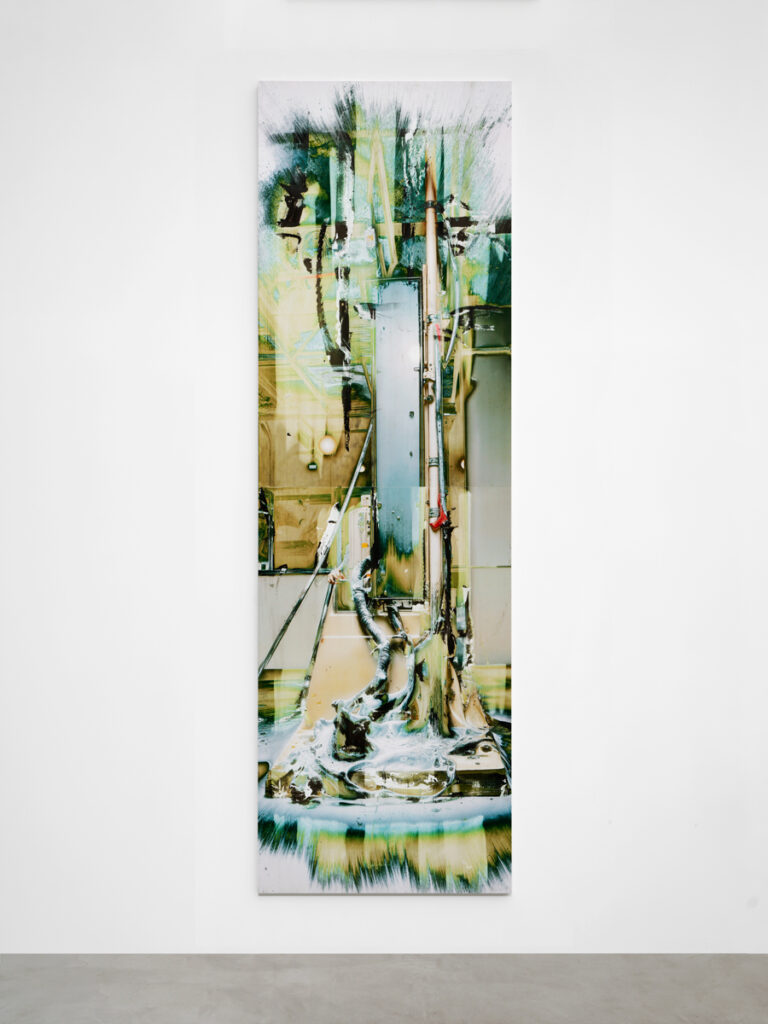
Jean-Vincent Simonet, The Arsenal (2025). Ink, oil pastel, and acrylic on aluminum sheet. 100 x 320 cm (2 panels of 100 x 160 cm). View of the exhibition “1000 milliards d’images” at the Reiffers Art Initiatives, Paris. Photo: Aurélien Mole.
My practice, as well as my personal history, are tied to a printing plant located between Lyon and Grenoble. I’d already worked around this site in previous projects, and for this show, I wanted to take things further, to push my practice a bit—drawing not only from the real world but blending these images of real places with digital collage, visual references from video games, animation, drawing, or painting. I saturated the original photographs, multiplied the objects within the images, altered the textures.

Jean-Vincent Simonet, Valve (2025). Ink, oil pastel, acrylic, and matte varnish on aluminum sheet. 200 x 160 cm (2 panels of 100 x 160 cm). View of the exhibition “1000 milliards d’images” at the Reiffers Art Initiatives, Paris. Photo: Aurélien Mole.
So you first manipulate the images digitally, then print them and transform them again—this time by hand. Like a painter working on a canvas. That’s the core of my practice. For the past eight years, I’ve developed a special technique using industrial synthetic materials not designed for inkjet printing. I run them through machines and, on output, the photographic surface is already transformed, still liquid, unfixed. It flows. It’s malleable, porous.
“The tension between the real and the digital is central to my work.” – Jean-Vincent Simonet
It’s my way of both digitally transforming the image beforehand and then reclaiming it physically, refusing to depend solely on digital tools. Like a painter, I come back with various instruments to modify the surface. Sometimes I use water to erase layers, revealing lower layers through subtractive techniques. Sometimes I apply a primer that grips the ink.
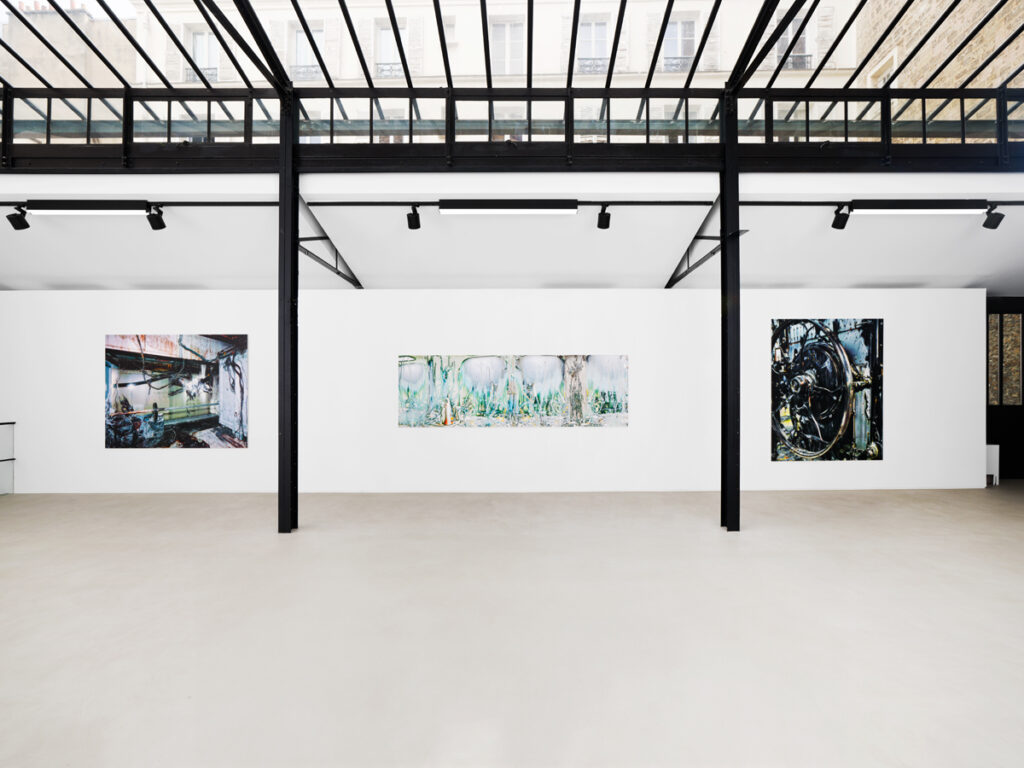
Each time, it’s a struggle with the image’s texture. A desire to escape the pixel and the photographic condition, to become a painting without ever quite being one. In the darker works, thick chalk mixes with the still-wet ink, creating a blur. Our perception is constantly challenged: it seems photographic from a distance, but up close it looks like airbrush painting… then you spot fingerprint traces.
I’m not formally trained as a painter. My approach is quite instinctive and spontaneous. I crave contact, the tactile feel of the surface. Once I’m satisfied with the result, I varnish the image to fix it, though that doesn’t stop me from reworking and re-varnishing it. It’s a never-ending struggle with the surface, just as these images themselves strive to transcend their condition as photographs and digital collages. The tension between the real and the digital is central to my work.
Jean-Vincent Simonet’s works are on display until May 10th, 2025, at the “1000 Milliards d’Images” exhibition by Reiffers Art Initiatives, Paris 17th.
